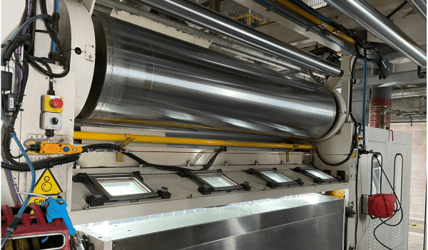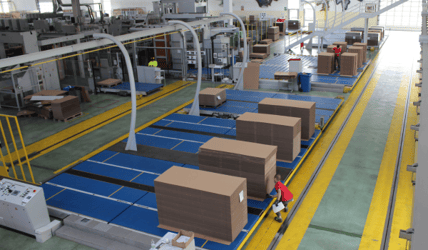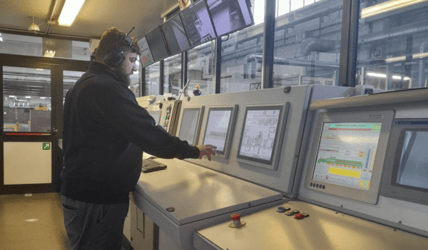In the world of corrugated packaging, consistency is everything. Yet achieving that consistency is often far more complex than it appears. Werecently brought together some of the sharpest minds in...
The Importance of Best Practice in Corrugated Manufacturing
In corrugated manufacturing, efficiency, quality, and waste reduction are fundamental to maintaining a competitive edge.
Yet, achieving consistency across production lines remains a challenge. The key to success? Implementing and maintaining best practices in process control.
While many manufacturers understand the importance of efficiency, few fully grasp the intricacies of what constitutes best practice - or how failing to follow it can lead to unnecessary waste, quality issues, and increased costs.
Contents
- A Historical Perspective: Learning from the Past
- What Defines Best Practice in Corrugated Manufacturing?
- Why Process Control is Essential
- Challenges in Adoption and Knowledge Transfer
- What the Future Holds
A Historical Perspective: Learning from the Past
Over the last two decades, the industry has undergone a significant transformation. There was a time when best practices in process control were barely recognized. Many corrugator operators, often trained on the job by predecessors with limited formal knowledge, worked with instinct rather than data.
For instance, common misconceptions in the past led to counterproductive methods - such as overheating paper and overcompensating with excessive glue application. The result? Weakened board structure, increased raw material consumption, and higher costs. This wasn’t due to negligence but rather a lack of standardized knowledge and process control tools. The industry has since evolved, driven by experts dedicated to defining and implementing best practices.
What Defines Best Practice in Corrugated Manufacturing?
Best practice is about understanding the fundamental principles of corrugation - controlling temperatures, glue application, and machine settings to optimize board quality while reducing resource consumption.
One of the best analogies for best practice is baking a cake: there are many ways to do it, but only one way to consistently achieve the right texture, taste, and appearance. Similarly, while operators may have their own techniques in corrugation, there is a defined, optimal way to produce strong, high-quality board with minimal waste.
Key elements of best practice include:
- Temperature Control: Overheating destroys fiber integrity, while inadequate heat leads to poor bonding. The right balance is crucial.
- Glue Application: More glue does not mean better bonding. Precision in application reduces waste and improves board strength.
- Moisture Balance: Paper enters the process with a set moisture content - ideally, it should exit with the same. Adding unnecessary moisture can lead to post-warping issues.
- Process Consistency: Every actuator on the machine plays a role - wrap arms, steam pressure, glue units, and more must be synchronized to achieve optimal results.
Why Process Control is Essential
Best practice is not just a concept - it requires precise execution. Process control ensures that every variable is measured and managed effectively. When machines are not correctly calibrated or monitored, operators may inadvertently deviate from best practice, leading to inconsistencies in board quality and wasted materials.
One of the biggest challenges in achieving best practice is variability - paper from different suppliers, seasonal temperature shifts, and wear on machinery all introduce variables that need to be accounted for. The role of process control is to standardize production, ensuring that fluctuations do not impact quality.
Challenges in Adoption and Knowledge Transfer
Despite the clear benefits of best practice, adoption can be difficult. Operators often take pride in their experience and may initially resist automation or process standardization, fearing it will replace their expertise. The reality, however, is that best practice empowers operators by reducing the need for constant manual adjustments and allowing them to focus on higher-value tasks like quality assurance and troubleshooting.
Additionally, the industry is facing a knowledge gap. Many experienced professionals are retiring, and with them, decades of hands-on expertise risk being lost. Without structured training programs and a commitment to knowledge transfer, manufacturers may struggle to maintain consistent quality as new employees enter the workforce.
What the Future Holds
Looking ahead, the corrugated industry will continue to evolve, driven by advancements in automation, AI, and data-driven decision-making. While technology will play a crucial role, expertise will remain at the core of success. Even as AI-powered systems take on more process control responsibilities, operators and plant managers must have a deep understanding of best practice to ensure systems are used effectively.
The key takeaway? Best practice in corrugated manufacturing is not just a set of guidelines - it’s the foundation of operational excellence. As the industry progresses, manufacturers that commit to process optimization, training, and continuous learning will position themselves as leaders in efficiency, quality, and sustainability.
If you want to refine your approach to best practice and process control, now is the time to start the conversation. The more we share knowledge, the stronger the industry becomes.



